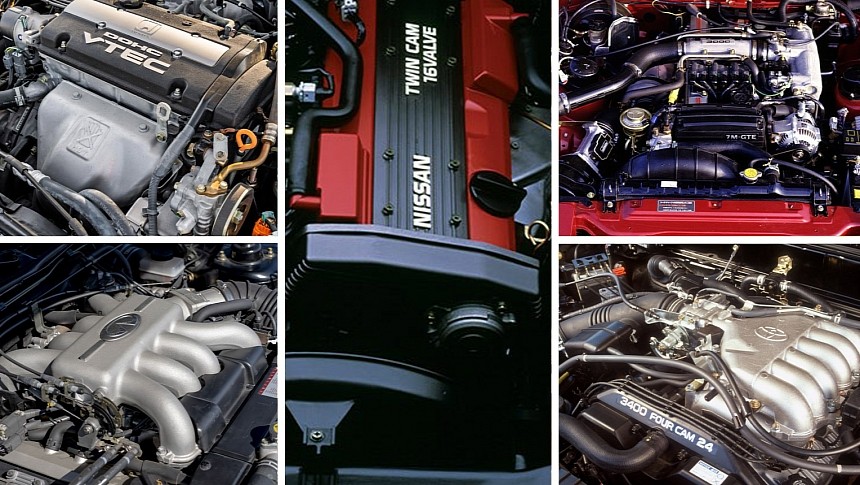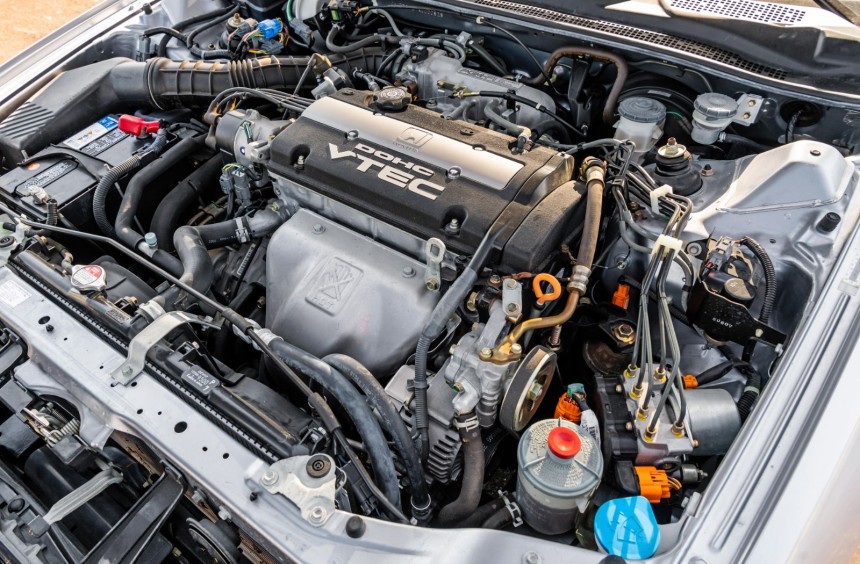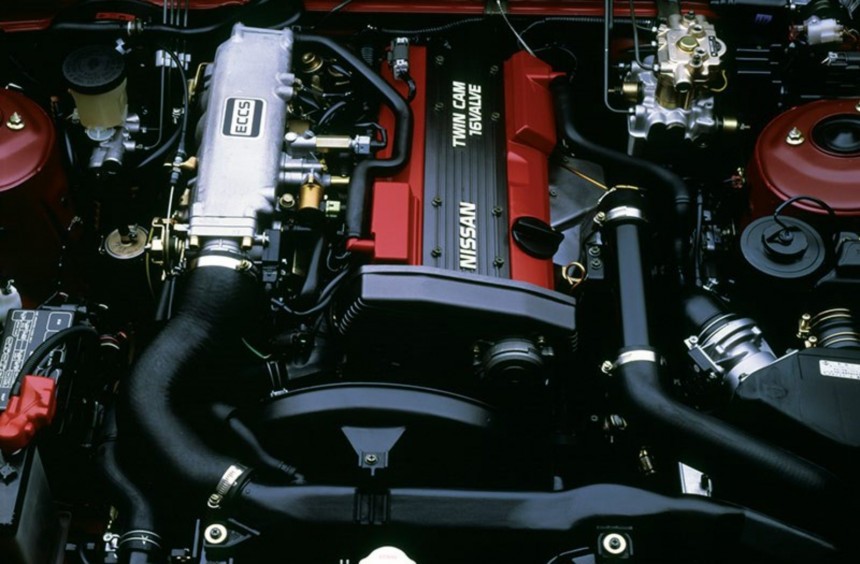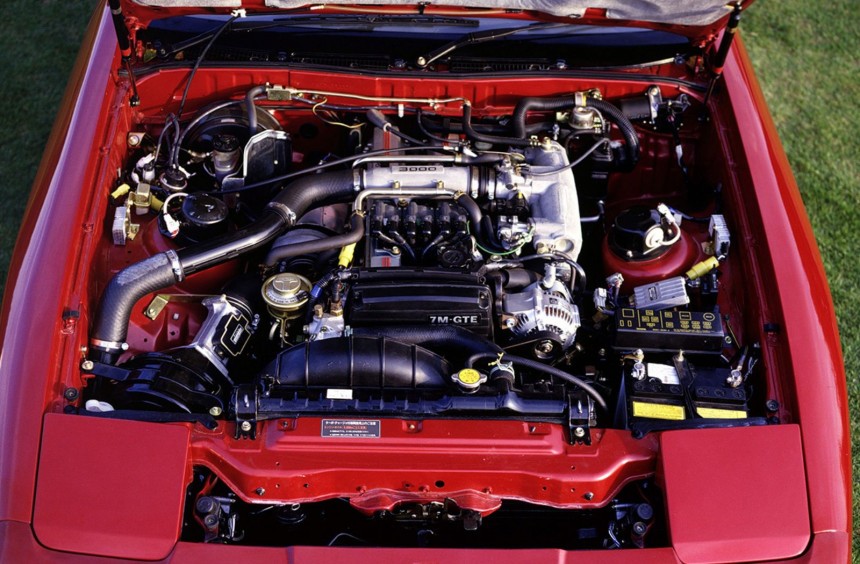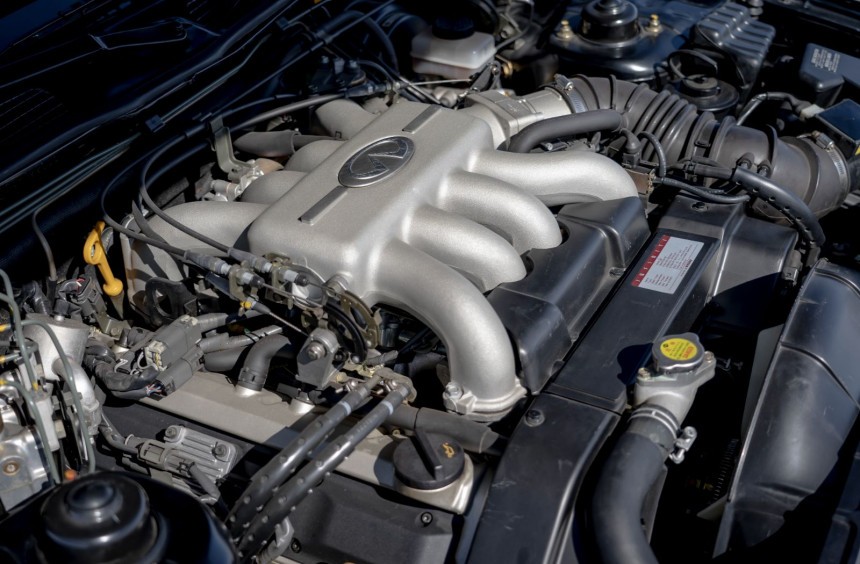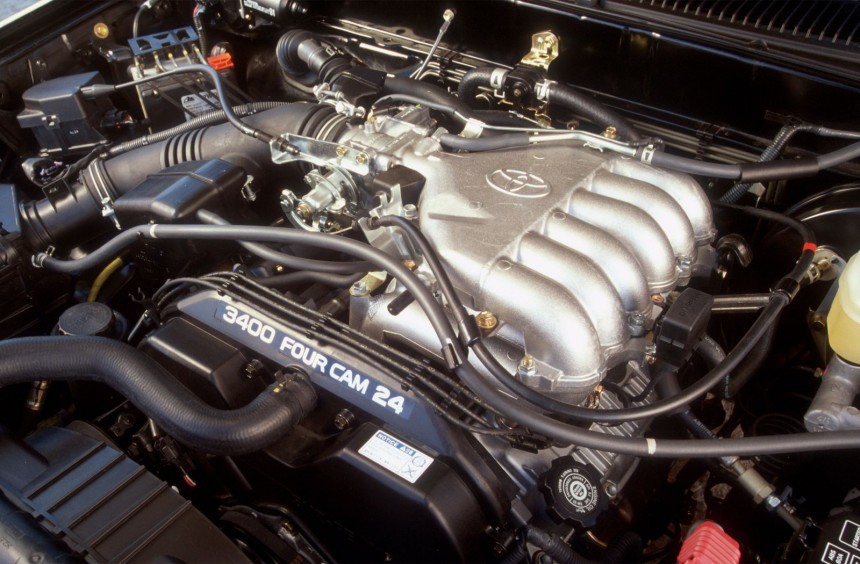While legendary engines like the RB26DETT, 2JZ-GTE, or 4G63T get all the credit for their innate reliability and virtually limitless tuning potential, those are not the only Japanese motors with such qualities.
Engines developed in Japan had gained a reputation for their reliability ever since the 1980s when smaller, cheaper, and fuel-efficient cars from the Land of the Rising Sun made their way to North American and European markets.
With the emergence of domestic high-performance cars and the accelerated growth of the local tuning community in the following years, Japanese engines started to show their true power potential.
Powerplants like the RB26DETT, 2JZ-GTE, or 4G63T (just to name a few) became textbook examples of reliability and performance not only in Japan but worldwide.
But while those engines get all the credit, there are other reliable Japanese engines with great tuning potential.
A 2.2-liter, all-aluminum inline-four, the naturally aspirated H22 debuted in 1992 on the Honda Prelude.
During its lifespan, which ended in 2001, the four-pot received eight revisions, becoming the Prelude model line's signature performance engine and also powering several versions of the Accord.
In stock form, the DOHC 16-valve VTEC unit made from 158 to 217 hp, and from a rev limit of 6,500 rpm, it was taken all the way up to 8,700 rpm.
With a solid construction that made it ultra-reliable, the H22 became a popular tuner engine.
With upgrades like hotter cams, high-flow injectors, and revised headers, the H22 can be easily taken to 300 hp on a stock bottom end. Add forced induction and aftermarket internals, and that can double.
The last member of Nissan's CA family of inline-fours, the 1.8-liter CA18DET was manufactured for nine years, from 1985 to 1994.
It initially powered the S12 Silvia Turbo RS-X but was also found under the hood of the succeeding S13 (earlier versions), its 180SX/200SX sibling, as well as versions of the U12 Bluebird and T12 Auster.
Based on the naturally-aspirated CA18DE, it received a brand-new 16-valve DOHC cylinder head and a Garrett T25 turbocharger. These upgrades helped the unit make 166 hp, a 35 hp increase over its non-turbo sibling.
Although overshadowed by the newer SR20DETT, the CA18DET is also a reliable engine with great tuning potential.
Its stock block can sustain close to 500 hp, while more advanced tuning can yield over 600 hp.
The 2JZ-GTE became Toyota's most famous engine and one of the best six-cylinders ever mass-produced, but its often-underrated grandfather was also a great motor.
Part of Toyota's venerable M engine family that debuted in 1965, the 3.0-liter six was produced from 1986 through 1992. It was the heart of the A70 Supra and also powered the luxurious Soarer (Z20 and Z21).
Built around a good ol' cast-iron block fitted with a DOHC cylinder head, the 7M-GTE featured a single turbo that helped it make 232 hp.
There was also a special 267-hp version that powered the JDM Supra Turbo A homologation special, which made one of the most potent Japanese engines at the time.
Like the succeeding 1JZ-GTE and 2JZ-GTE, the 7M-GTE was a very reliable engine, which gave tuners a great platform to experiment with.
Though it doesn't have the same aftermarket backing, the old six-cylinder is still highly tunable today, with the potential of making 450 hp on the stock bottom end without sacrificing reliability.
Though the R32, R33, and R34 Skyline GT-R's RB26DETT is considered by many to be Nissan's greatest engine, the Japanese manufacturer also built a stellar V8 during the same period.
Displacing 4.5 liters and weighing less than the RB26, the VH45DE was manufactured from 1989 to 2001.
Throughout its lifespan, the all-aluminum, naturally-aspirated powerplant was only used in the Infiniti Q45 (G50) sedan and the Nissan President limousine (JG50).
In stock form, it was rated between 266 and 276 hp (depending on the model year), and since it was used on flagship models, it was overengineered to deliver supreme reliability.
Years after it was discontinued, it became a popular engine swap because it was cheap and easy to source.
The tuning community soon discovered that its bottom end was so well engineered that it could theoretically handle nearly 1,000 hp without modifying the internals.
Of course, for a budget-friendly, daily-driver tune, one can expect up to 500 hp without compromising long-term reliability.
Part of Toyota's first line of mass-produced V6 engines, the naturally aspirated 5VZ-FE featured DOHC aluminum heads mounted atop a cast-iron block.
Manufactured from 1992 to 1997, it displaced 3.0 liters and made up to 190 hp. Though that was not much, the engine was a very reliable workhorse that powered trucks like the Tacoma, Tundra, and Hilux, SUVs like the Land Cruiser Prado and 4Runner, as well as the JDM Grand HiAce MPV.
Pickup truck and off-road enthusiasts have been tuning this engine since it was discontinued. At first, it was believed that its bottom end couldn't withstand more than 250 hp, but with modern aftermarket parts, it can take over 300 hp without the use of forced induction.
With the addition of stronger internals, hotter cams, sturdier head bolts, and a turbocharger, the 5VZ-FE can easily provide well over 600 hp.
With the emergence of domestic high-performance cars and the accelerated growth of the local tuning community in the following years, Japanese engines started to show their true power potential.
Powerplants like the RB26DETT, 2JZ-GTE, or 4G63T (just to name a few) became textbook examples of reliability and performance not only in Japan but worldwide.
But while those engines get all the credit, there are other reliable Japanese engines with great tuning potential.
Honda H22
During its lifespan, which ended in 2001, the four-pot received eight revisions, becoming the Prelude model line's signature performance engine and also powering several versions of the Accord.
In stock form, the DOHC 16-valve VTEC unit made from 158 to 217 hp, and from a rev limit of 6,500 rpm, it was taken all the way up to 8,700 rpm.
With a solid construction that made it ultra-reliable, the H22 became a popular tuner engine.
With upgrades like hotter cams, high-flow injectors, and revised headers, the H22 can be easily taken to 300 hp on a stock bottom end. Add forced induction and aftermarket internals, and that can double.
Nissan CA18DET
It initially powered the S12 Silvia Turbo RS-X but was also found under the hood of the succeeding S13 (earlier versions), its 180SX/200SX sibling, as well as versions of the U12 Bluebird and T12 Auster.
Based on the naturally-aspirated CA18DE, it received a brand-new 16-valve DOHC cylinder head and a Garrett T25 turbocharger. These upgrades helped the unit make 166 hp, a 35 hp increase over its non-turbo sibling.
Although overshadowed by the newer SR20DETT, the CA18DET is also a reliable engine with great tuning potential.
Its stock block can sustain close to 500 hp, while more advanced tuning can yield over 600 hp.
Toyota 7M-GTE
Part of Toyota's venerable M engine family that debuted in 1965, the 3.0-liter six was produced from 1986 through 1992. It was the heart of the A70 Supra and also powered the luxurious Soarer (Z20 and Z21).
Built around a good ol' cast-iron block fitted with a DOHC cylinder head, the 7M-GTE featured a single turbo that helped it make 232 hp.
There was also a special 267-hp version that powered the JDM Supra Turbo A homologation special, which made one of the most potent Japanese engines at the time.
Like the succeeding 1JZ-GTE and 2JZ-GTE, the 7M-GTE was a very reliable engine, which gave tuners a great platform to experiment with.
Though it doesn't have the same aftermarket backing, the old six-cylinder is still highly tunable today, with the potential of making 450 hp on the stock bottom end without sacrificing reliability.
Nissan VH45DE
Displacing 4.5 liters and weighing less than the RB26, the VH45DE was manufactured from 1989 to 2001.
Throughout its lifespan, the all-aluminum, naturally-aspirated powerplant was only used in the Infiniti Q45 (G50) sedan and the Nissan President limousine (JG50).
In stock form, it was rated between 266 and 276 hp (depending on the model year), and since it was used on flagship models, it was overengineered to deliver supreme reliability.
Years after it was discontinued, it became a popular engine swap because it was cheap and easy to source.
The tuning community soon discovered that its bottom end was so well engineered that it could theoretically handle nearly 1,000 hp without modifying the internals.
Of course, for a budget-friendly, daily-driver tune, one can expect up to 500 hp without compromising long-term reliability.
Toyota 5VZ-FE
Manufactured from 1992 to 1997, it displaced 3.0 liters and made up to 190 hp. Though that was not much, the engine was a very reliable workhorse that powered trucks like the Tacoma, Tundra, and Hilux, SUVs like the Land Cruiser Prado and 4Runner, as well as the JDM Grand HiAce MPV.
Pickup truck and off-road enthusiasts have been tuning this engine since it was discontinued. At first, it was believed that its bottom end couldn't withstand more than 250 hp, but with modern aftermarket parts, it can take over 300 hp without the use of forced induction.
With the addition of stronger internals, hotter cams, sturdier head bolts, and a turbocharger, the 5VZ-FE can easily provide well over 600 hp.
